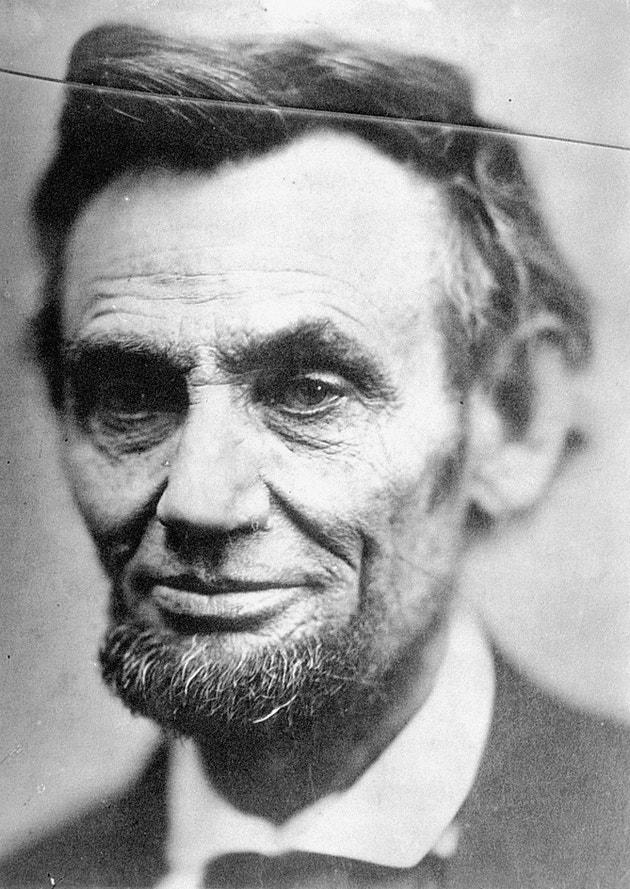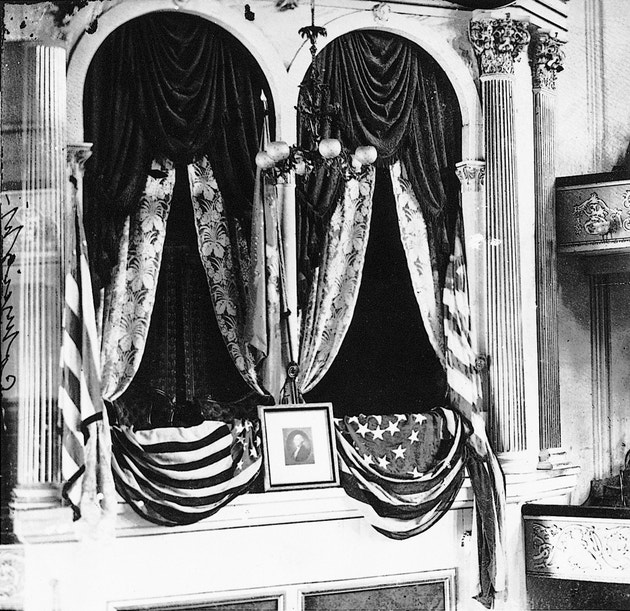150th Anniversary of Lincoln Assassination Commemorated
April 14, 2015
Today, the 150th anniversary of Abraham Lincoln’s assassination is being observed throughout the United States. Ford’s Theatre, where Lincoln was shot, is having an around-the-clock vigil today and tomorrow, marking the events of Lincoln’s assassination. The Henry Ford Museum in Dearborn, Michigan, which owns the chair that Lincoln was sitting in when he was shot, will remove the chair from its glass-enclosed case and allow visitors a closer view. The Abraham Lincoln Presidential Library and Museum in Springfield, Illinois, will have a special ceremony tomorrow to commemorate Lincoln’s life and death.

A late portrait of Abraham Lincoln, taken in February 1865. (The line running across the top is a scratch in the negative.) Meserve Collection, Library of Congress
Lincoln, who was president of the United States from 1861 to 1865, led the United States during the American Civil War. He helped end slavery in the nation and helped keep the Union states together during the war. The Civil War, which began in April 1861, was a conflict between the United States government and a group of Southern States that had seceded (withdrawn) from the union to form the Confederate States of America. After four years of bitter war, on April 9, 1865, Confederate General Robert E. Lee surrendered his army at Appomattox Court House, Virginia. With Lee’s army gone, the end of the war was near.

The president’s box at Ford’s Theatre in Washington, D.C., where Abraham Lincoln was sitting when John Wilkes Booth shot him on the evening of April 14, 1865. Lincoln died the next day. Library of Congress
Five days after Lee’s surrender, Lincoln attended a performance of the comedy Our American Cousin at Ford’s Theatre in Washington. At 10:22 p.m., John Wilkes Booth, one of the best-known actors of the day and a Confederate sympathizer, shot Lincoln in the head. Lincoln was carried unconscious to a boarding house across the street. Lincoln’s family and a number of high government officials surrounded him. Lincoln died at 7:22 a.m. on April 15. As president, Lincoln had been bitterly criticized. After his death, however, even his enemies praised his kindly spirit and selflessness. The train carrying Lincoln’s body traveled from Washington, D.C., to Springfield, Illinois. Mourners lined the tracks as it moved across the country. On May 4, Lincoln was buried in Oak Ridge Cemetery in Springfield.
After shooting Lincoln, Booth jumped to the stage, caught his spur in a flag draped in front of the box, and fell and broke his leg. But he limped across the stage brandishing a dagger and crying: Sic Semper Tyrannis (Thus Always to Tyrants), the motto of Virginia. Booth fled to Maryland and later escaped to Virginia. On April 26, 1865, federal troops trapped Booth in a barn near Port Royal, Virginia, and shot and killed him. Booth’s shooting of Lincoln was part of a larger plot to not only assassinate the president, but to also kill Vice President Andrew Johnson and Secretary of State William H. Seward. (Johnson was not attacked and Seward survived the attempt on his life.) Eight people were charged with conspiracy to assassinate federal officials and put on trial. A military commission convicted all eight defendants and sentenced four of them to be hanged.
Other links and articles:
- When Lilacs Last in the Dooryard Bloom’d (Poem by American poet Walt Whitman about Lincoln’s assassination and funeral procession—Poetry Foundation)


